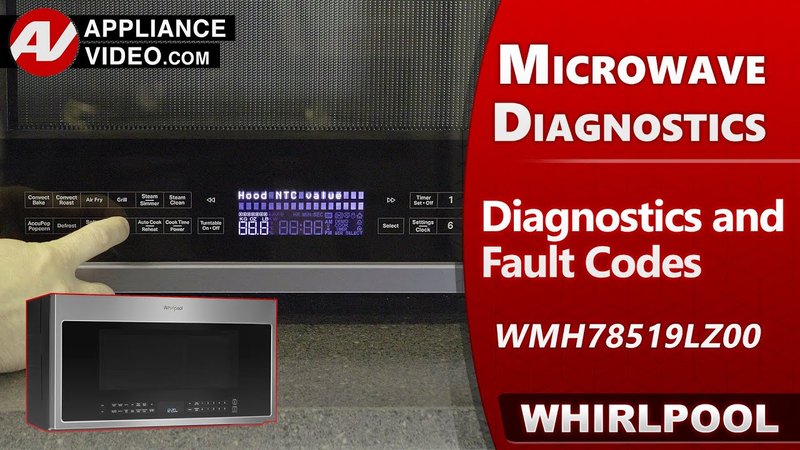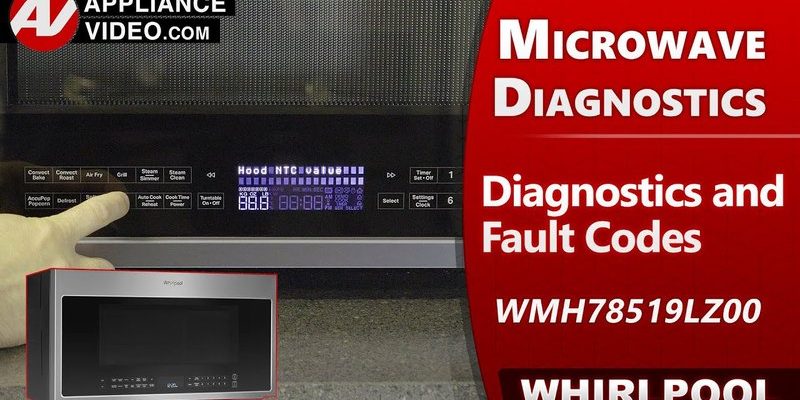
Microwaves are built with a slew of sensors and safety features to ensure they operate correctly and safely. When you see an error code like E3 on your GE microwave, it’s essentially the machine’s way of waving a red flag to get your attention. This particular error code suggests that there’s something amiss with the microwave’s interlock system, which is a fancy way to say that the door lock might not be working as it should. It’s like a car’s check engine light; it might still run, but that light means something needs attention.
Understanding the Error Code E3
So what exactly does the E3 error code tell us? To put it simply, the E3 error code on a GE microwave usually indicates a problem with the door’s ability to signal to the microwave that it’s securely closed. Imagine trying to ride a bike with a loose chain; it just won’t function as expected. Your microwave needs to know the door is shut tight before it can safely start cooking food. This is a vital safety feature because if the door isn’t properly closed, microwave energy could leak out — and that’s not something you want happening in your kitchen.
When you spot this error code, it’s crucial to pay attention. The door latch or the sensors might be dirty, damaged, or misaligned. This could happen if the door has been slammed shut a few too many times or if there’s grime buildup that’s preventing proper closure. Think of it like a sticky lock on a door in your home; it might catch sometimes, but if it doesn’t latch properly, you can’t ensure the door is secure.
Ignoring the E3 code could lead to more significant issues down the line, including potential safety risks. Microwaves are fantastic tools, but only when they’re operating safely and efficiently. So if you see E3, it’s time to stop and assess the situation rather than simply hitting the start button again and hoping for the best.
Causes and Consequences of Ignoring the E3 Code
Wondering why your microwave might be showing the E3 error code? Let’s break it down. The causes can range from minor to a bit more serious. Sometimes, it’s as simple as a speck of debris stuck in the door latch or a slight misalignment from regular use. Other times, it could be a more technical issue with the door switch or an electronic glitch in the control board. It’s like finding out why a computer isn’t turning on; it could be a simple power issue or a deeper hardware problem.
Ignoring this error can lead to several inconveniences and potential dangers. For starters, the microwave might not run at all, leaving you with a cold meal when you’re hoping for something hot. Worse yet, if there’s an actual problem with the door lock mechanism, running it without resolving the issue could pose safety hazards. Just like ignoring a leaking roof until it floods your living room, neglecting this could escalate into a bigger issue.
When you notice the E3 error code, the best course of action is to address it promptly. Consider it like listening to your body’s signals when you’re feeling under the weather. Ignoring symptoms can lead to a bigger illness. Similarly, addressing this code quickly can prevent more serious, possibly costly repairs, and keep your microwave running smoothly and safely.
Steps to Fix the Error Code E3
Now that we know it’s important to address the error code, how do you go about fixing it? First, start with a simple inspection. Open and close the microwave door a few times to see if the error persists. Check for any food particles or debris stuck in the door’s latch area. Sometimes, a quick cleaning with a damp cloth can do the trick, much like how wiping smudges off glasses makes vision clearer.
If the problem seems to be more technical, like a faulty door switch, and you’re not comfortable tinkering with electronics, it might be time to call in the pros. Think of it like calling a mechanic when your car engine is making funny noises. It’s always best to have an expert look at it to ensure everything is working correctly — and safely.
Preventative steps can also help keep your microwave in top shape. Be gentle when closing the door; after all, slamming it repeatedly can misalign sensors and damage the latch. Regular cleaning and maintenance checks can also go a long way in preventing issues like the E3 error from cropping up unexpectedly.
In conclusion, while it might be tempting to ignore the E3 error code in your GE microwave, it’s best to address it promptly. This ensures your microwave continues to operate safely and efficiently, reducing the risk of further damage or inconvenience. By understanding what the code means and taking the right steps to fix it, you can keep enjoying your microwave’s many conveniences without a hitch.
